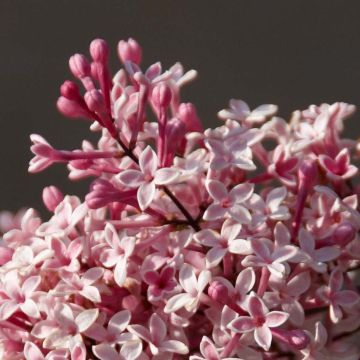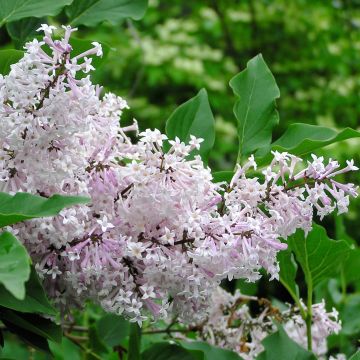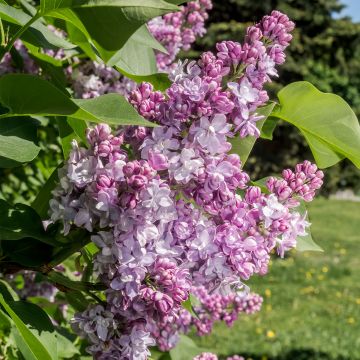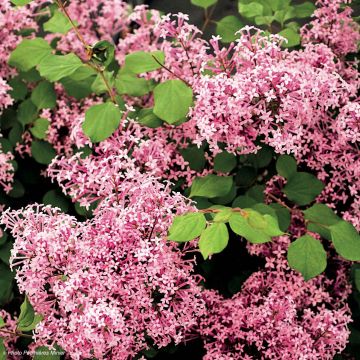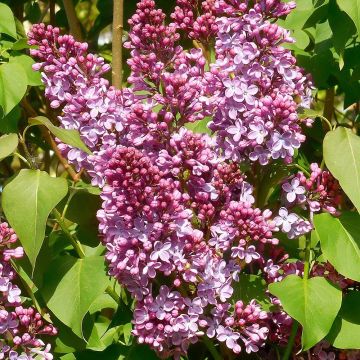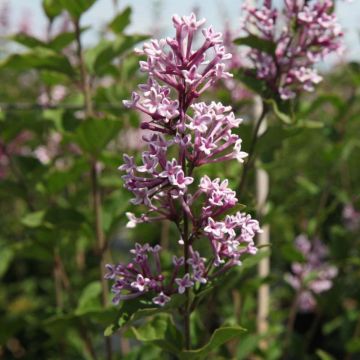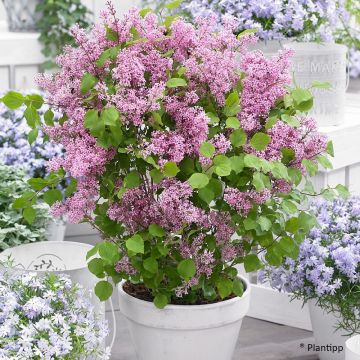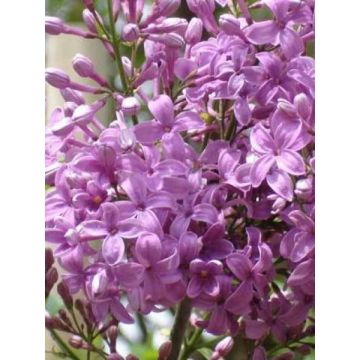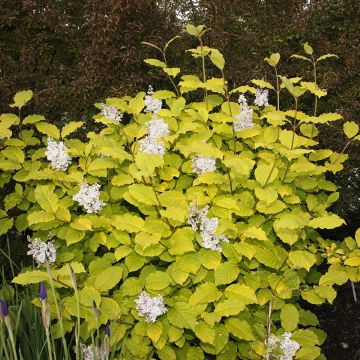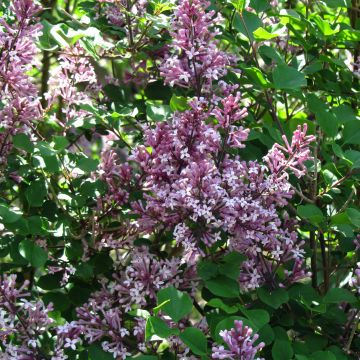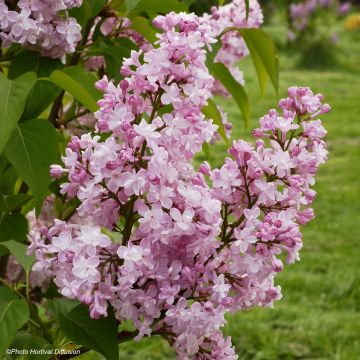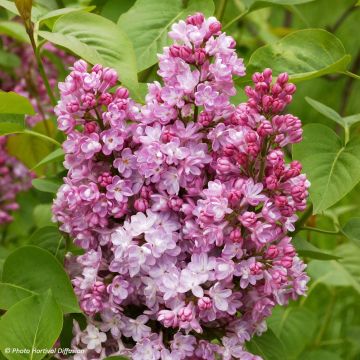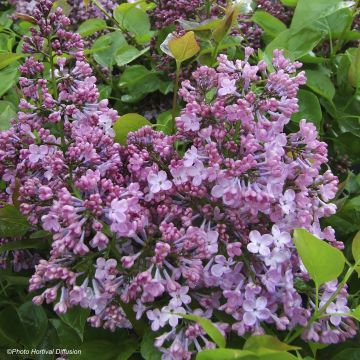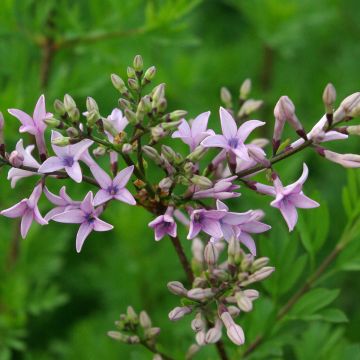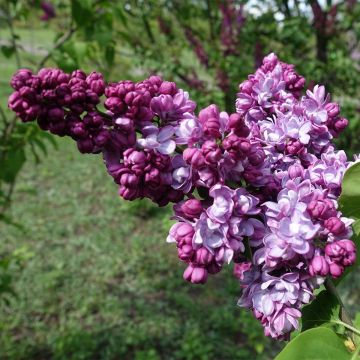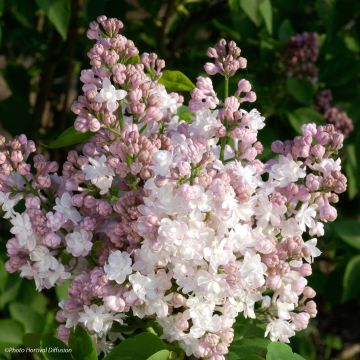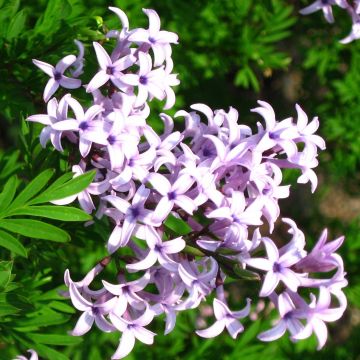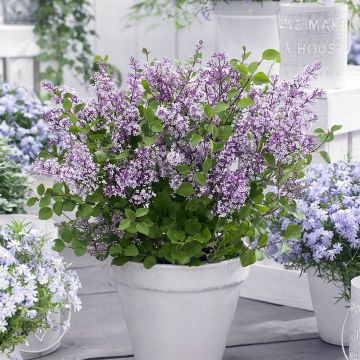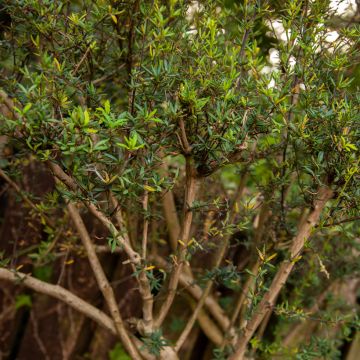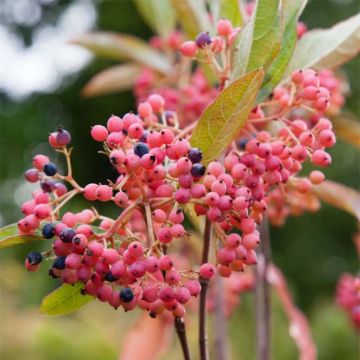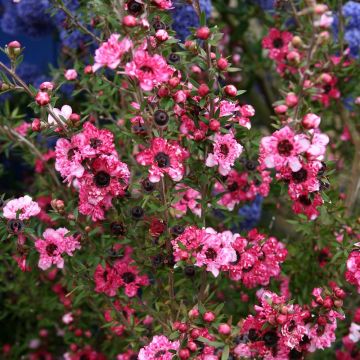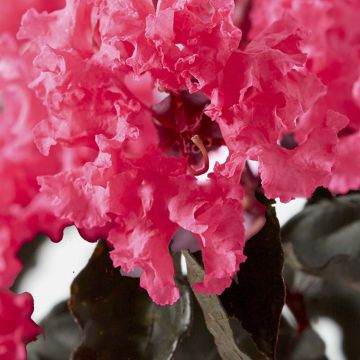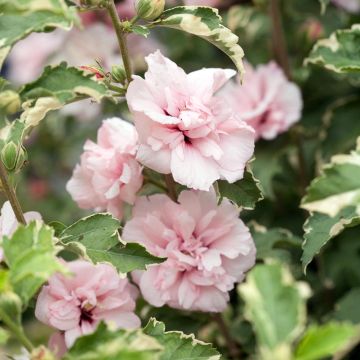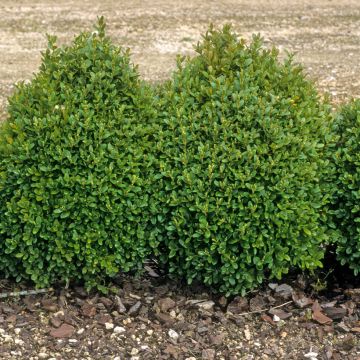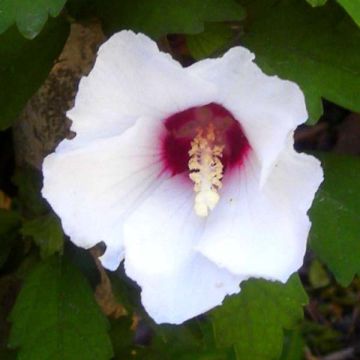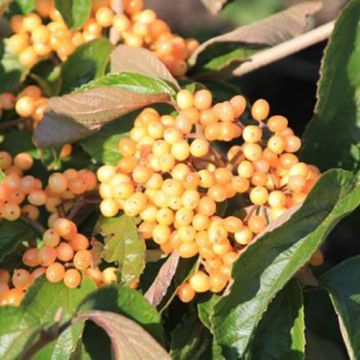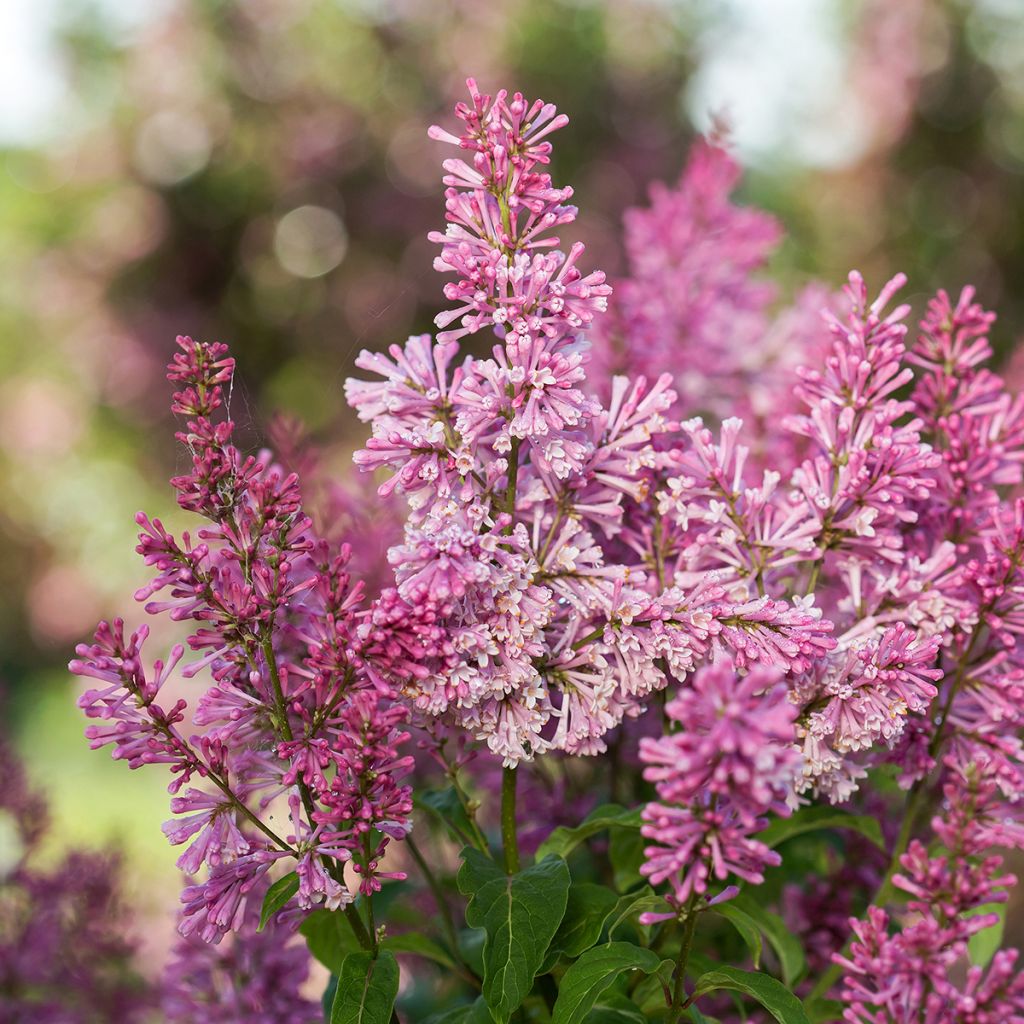

Syringa prestoniae Pinktini - Lilac
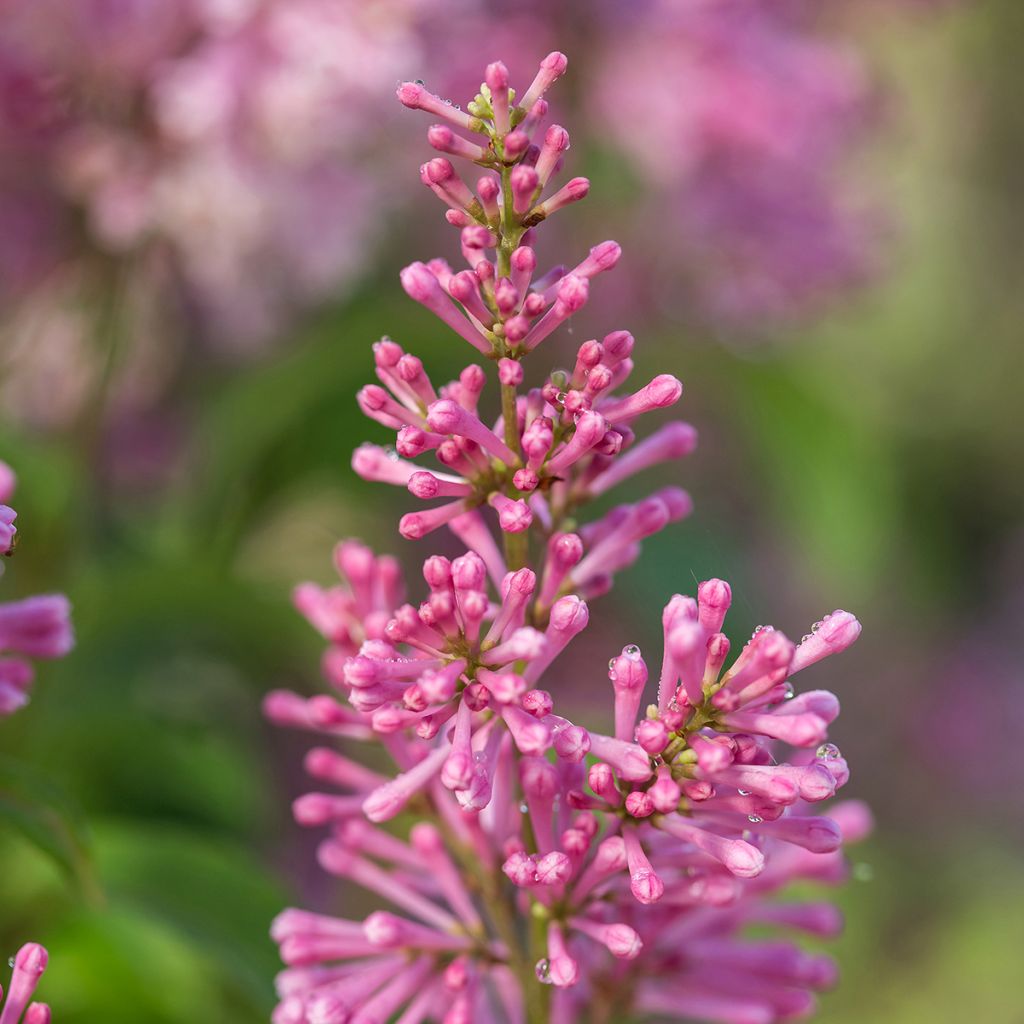

Syringa prestoniae Pinktini - Lilac
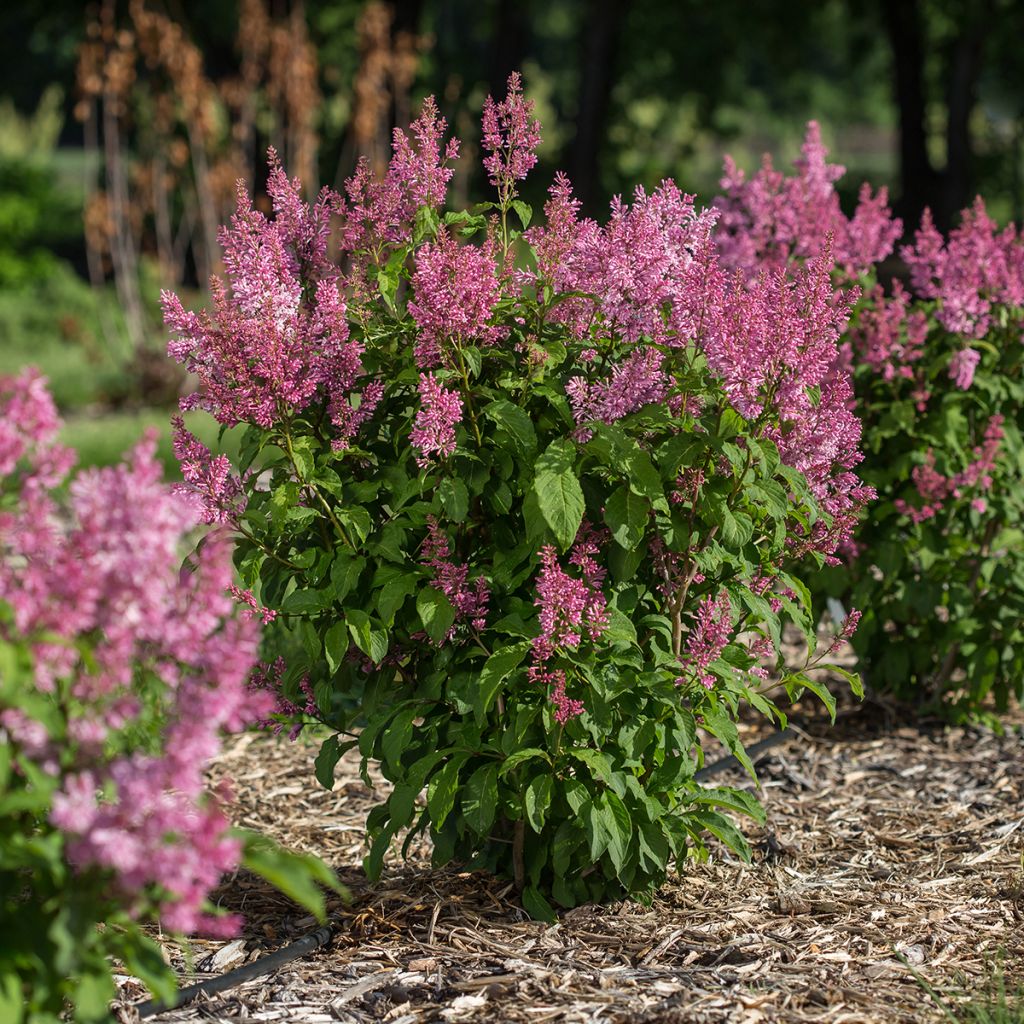

Syringa prestoniae Pinktini - Lilac
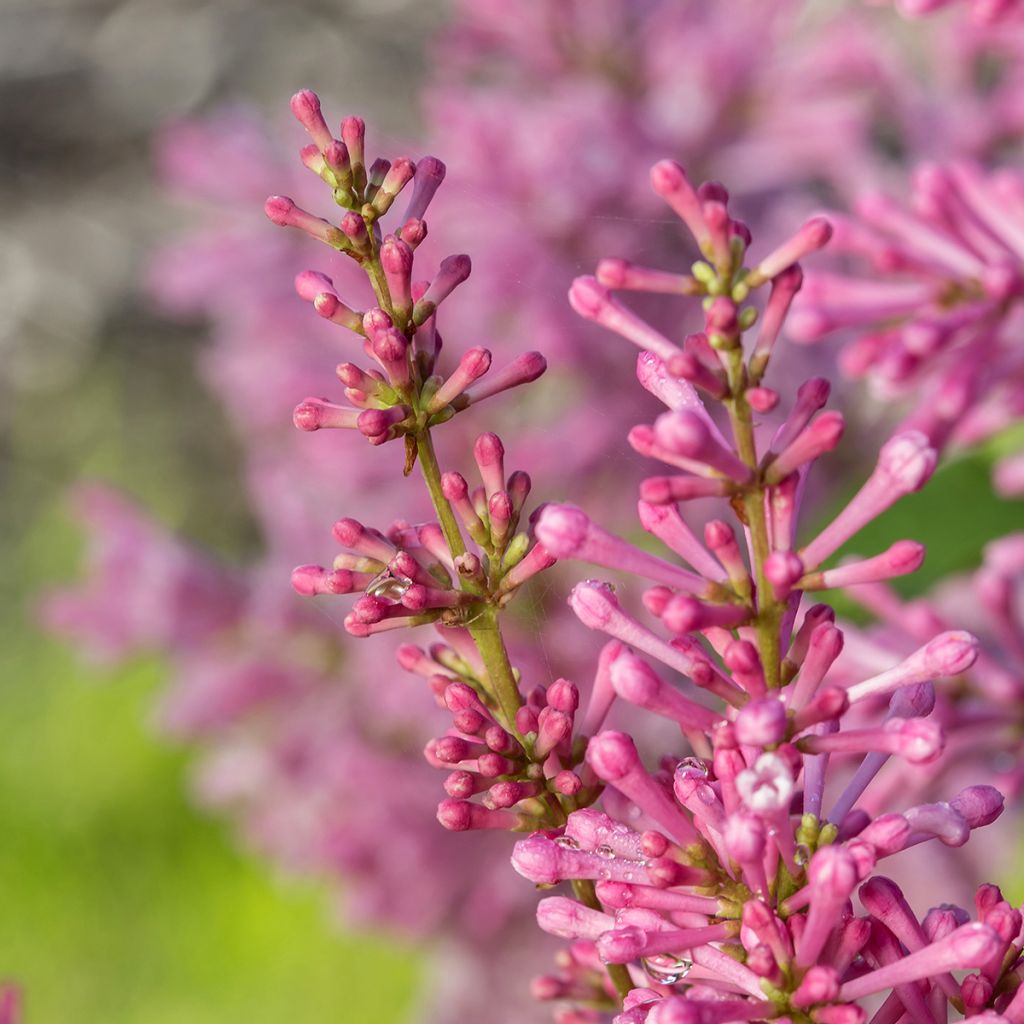

Syringa prestoniae Pinktini - Lilac
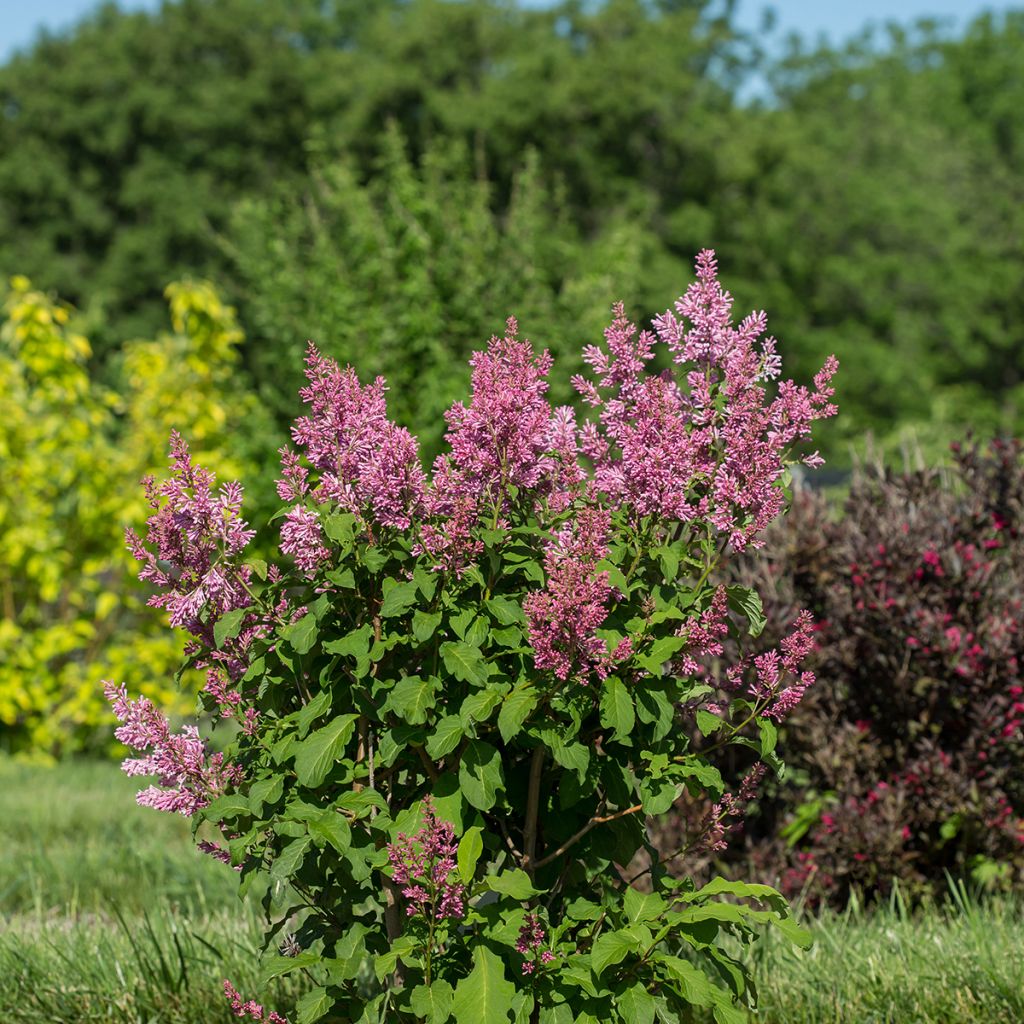

Syringa prestoniae Pinktini - Lilac
Syringa prestoniae Pinktini - Lilac
Syringa x prestoniae First Editions® Pinktini™ 'Jeftin'
Lilac
Why not try an alternative variety in stock?
View all →This plant carries a 24 months recovery warranty
More information
We guarantee the quality of our plants for a full growing cycle, and will replace at our expense any plant that fails to recover under normal climatic and planting conditions.
From €5.90 for pickup delivery and €6.90 for home delivery
Express home delivery from €8.90.
Does this plant fit my garden?
Set up your Plantfit profile →
Description
Syringa First Editions® Pinktini™ 'Jeftin' is a dwarf lilac variety that will charm with its compact habit, its generous pink flowering, and its very healthy foliage that remains beautiful until autumn. In spring, you can admire its clusters of fragrant flowers, visited by pollinators. In autumn, the shrub is superb under flamboyant foliage. Its small growth is perfectly suited to small gardens and container gardening. It is a hardy, drought-tolerant variety which is low maintenance.
Syringa x prestoniae 'Pinktini' belongs to the Oleaceae family. This cultivar was obtained by Jeffries Nurseries located in the province of Manitoba, Canada. This lilac is particularly suitable for cold climates. Its habit is both upright and rounded, reaching between 1.2 and 1.5 m in height and 0.9 to 1.2 m in width. This variety blooms between May and June. Its flowering takes the form of large upright panicles composed of deep pink flower buds opening into pink flowers. It has a fragrant flowering, but its fragrance is not comparable to that of common lilac (Syringa vulgaris). The foliage, a fairly light green during the season, turns butter yellow, then reddish-purple in autumn before falling. The leaves of this lilac are pointed, smaller than those of the common lilac, and resistant to powdery mildew. This 'Pinktini' lilac does not sucker, which limits its maintenance. Hardy down to -25°C, it tolerates summer drought well and adapts to different growing conditions. It prefers very sunny exposures and well-drained soil.
The Preston lilac 'Pinktini' can be used as a specimen plant in a small garden, to create small hedges or flowering screens, or simply in a shrub border. This shrub, visited by butterflies, has its place in a natural garden dedicated to biodiversity. To accompany the 'Pinktini' lilac, choose for example Weigela florida 'Alexandra', Japanese Spirea 'Goldflame' with its golden foliage, Abelia grandiflora for its long summer flowering and evergreen foliage, and Physocarpus opulifolius 'Diabolo' whose purple foliage will enhance the pink flowers of the lilac.
Report an error about the product description
Syringa prestoniae Pinktini - Lilac in pictures


Plant habit
Flowering
Foliage
Botanical data
Syringa
x prestoniae
First Editions® Pinktini™ 'Jeftin'
Oleaceae
Lilac
Cultivar or hybrid
Other Syringa - Lilac
Planting and care
The Lilac 'Pinktini' should be planted in full sun, in a deep and well-drained soil. It can tolerate any type of soil, but it is sensitive to highly acidic and/or very clayey, compact soils. It will grow well in partially shaded areas, but flowering may be reduced. It has excellent hardiness, tolerating temperatures below -20°C. Easy to grow, it only requires mulching and regular watering during the first few months, and additional watering in case of very dry summers.
You can prune the flowering branches to make beautiful bouquets, or after flowering to promote the emergence of new flowers and prevent the bush from becoming exhausted. Avoid severe pruning that limits the spring flowering, unless your Lilac becomes too large.
Planting period
Intended location
Care
This item has not been reviewed yet - be the first to leave a review about it.
Hedge shrubs
Haven't found what you were looking for?
Hardiness is the lowest winter temperature a plant can endure without suffering serious damage or even dying. However, hardiness is affected by location (a sheltered area, such as a patio), protection (winter cover) and soil type (hardiness is improved by well-drained soil).

Photo Sharing Terms & Conditions
In order to encourage gardeners to interact and share their experiences, Promesse de fleurs offers various media enabling content to be uploaded onto its Site - in particular via the ‘Photo sharing’ module.
The User agrees to refrain from:
- Posting any content that is illegal, prejudicial, insulting, racist, inciteful to hatred, revisionist, contrary to public decency, that infringes on privacy or on the privacy rights of third parties, in particular the publicity rights of persons and goods, intellectual property rights, or the right to privacy.
- Submitting content on behalf of a third party;
- Impersonate the identity of a third party and/or publish any personal information about a third party;
In general, the User undertakes to refrain from any unethical behaviour.
All Content (in particular text, comments, files, images, photos, videos, creative works, etc.), which may be subject to property or intellectual property rights, image or other private rights, shall remain the property of the User, subject to the limited rights granted by the terms of the licence granted by Promesse de fleurs as stated below. Users are at liberty to publish or not to publish such Content on the Site, notably via the ‘Photo Sharing’ facility, and accept that this Content shall be made public and freely accessible, notably on the Internet.
Users further acknowledge, undertake to have ,and guarantee that they hold all necessary rights and permissions to publish such material on the Site, in particular with regard to the legislation in force pertaining to any privacy, property, intellectual property, image, or contractual rights, or rights of any other nature. By publishing such Content on the Site, Users acknowledge accepting full liability as publishers of the Content within the meaning of the law, and grant Promesse de fleurs, free of charge, an inclusive, worldwide licence for the said Content for the entire duration of its publication, including all reproduction, representation, up/downloading, displaying, performing, transmission, and storage rights.
Users also grant permission for their name to be linked to the Content and accept that this link may not always be made available.
By engaging in posting material, Users consent to their Content becoming automatically accessible on the Internet, in particular on other sites and/or blogs and/or web pages of the Promesse de fleurs site, including in particular social pages and the Promesse de fleurs catalogue.
Users may secure the removal of entrusted content free of charge by issuing a simple request via our contact form.
The flowering period indicated on our website applies to countries and regions located in USDA zone 8 (France, the United Kingdom, Ireland, the Netherlands, etc.)
It will vary according to where you live:
- In zones 9 to 10 (Italy, Spain, Greece, etc.), flowering will occur about 2 to 4 weeks earlier.
- In zones 6 to 7 (Germany, Poland, Slovenia, and lower mountainous regions), flowering will be delayed by 2 to 3 weeks.
- In zone 5 (Central Europe, Scandinavia), blooming will be delayed by 3 to 5 weeks.
In temperate climates, pruning of spring-flowering shrubs (forsythia, spireas, etc.) should be done just after flowering.
Pruning of summer-flowering shrubs (Indian Lilac, Perovskia, etc.) can be done in winter or spring.
In cold regions as well as with frost-sensitive plants, avoid pruning too early when severe frosts may still occur.
The planting period indicated on our website applies to countries and regions located in USDA zone 8 (France, United Kingdom, Ireland, Netherlands).
It will vary according to where you live:
- In Mediterranean zones (Marseille, Madrid, Milan, etc.), autumn and winter are the best planting periods.
- In continental zones (Strasbourg, Munich, Vienna, etc.), delay planting by 2 to 3 weeks in spring and bring it forward by 2 to 4 weeks in autumn.
- In mountainous regions (the Alps, Pyrenees, Carpathians, etc.), it is best to plant in late spring (May-June) or late summer (August-September).
The harvesting period indicated on our website applies to countries and regions in USDA zone 8 (France, England, Ireland, the Netherlands).
In colder areas (Scandinavia, Poland, Austria...) fruit and vegetable harvests are likely to be delayed by 3-4 weeks.
In warmer areas (Italy, Spain, Greece, etc.), harvesting will probably take place earlier, depending on weather conditions.
The sowing periods indicated on our website apply to countries and regions within USDA Zone 8 (France, UK, Ireland, Netherlands).
In colder areas (Scandinavia, Poland, Austria...), delay any outdoor sowing by 3-4 weeks, or sow under glass.
In warmer climes (Italy, Spain, Greece, etc.), bring outdoor sowing forward by a few weeks.

































